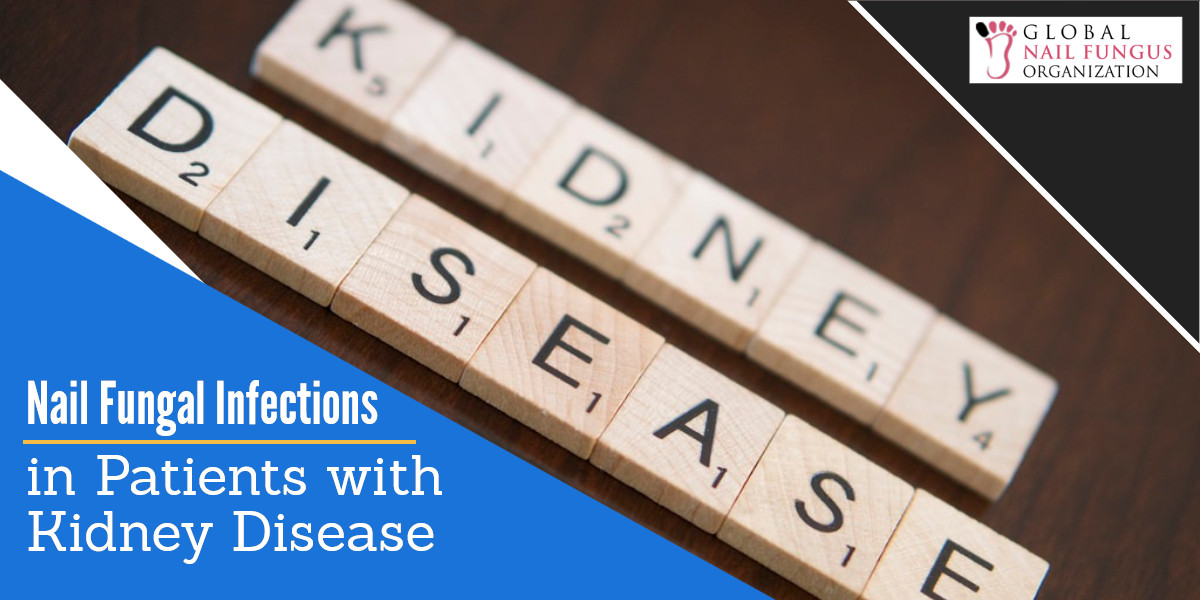 Nail Fungal Infection in Patients with Chronic Kidney Disease
Nail Fungal Infection in Patients with Chronic Kidney Disease
Table of Contents
What is Chronic Kidney Disease?
Chronic kidney disease (CKD), or chronic renal failure, is the gradual loss of kidney function over time. It includes conditions that decrease the kidneys’ ability to keep the whole body healthy by failing to do their job. CKD affects 26 million adult Americans, while millions of others are susceptible.
Kidneys filter the body’s wastes and excess fluids from the blood, excreting them in urine. When kidneys are not able to do this anymore, the body wastes, fluid levels, and electrolytes can build to dangerous high levels in the blood. This would lead to complications like nerve damage, heart and blood vessel disease, and high blood pressure. Early stages of chronic kidney disease only shows a few symptoms, which patients may mistake for signs of other minor conditions. Chronic renal disease may not become apparent until it’s too late when the kidneys are significantly damaged.
Symptoms of renal failure include loss of appetite, fatigue, decreased mental sharpness, changes in urine, muscle cramps and twitches, persistent itching, nausea and vomiting, and swelling of feet and ankles. These signs are often nonspecific and can be caused by other illnesses as well.
It is important that CKD is detected and treated early to prevent it from progressing. Otherwise, the condition may lead to kidney failure, which would require kidney transplant or regular dialysis. At the first symptom of kidney disease, it’s recommended to see a doctor for tests to obtain proper diagnosis.
Chronic kidney disease does not choose its victims; anyone can suffer from it. However, people who have type 1 or type 2 diabetes and high blood pressure are at an increased risk of getting the disease. Diabetes and high blood pressure are the two main causes of CKD. Other factors that may increase the risk of getting CKD include smoking, obesity, old age, abnormal kidney structure, heart and blood vessel disease, family history of kidney disease, and being African-American, Native American, or Asian American.
There is no cure for chronic kidney disease, only controlled measures to reduce complications and progression of the disease. For end-stage kidney disease or when the kidneys have complete or near-complete failure, the solution is either dialysis or kidney transplant.
Dialysis is the artificial removal of wastes, salt, and extra water from the body, which was the kidneys’ original job. It also keeps a safe level of chemicals — like potassium, sodium and bicarbonate — in the body. Unless patients are able to undergo kidney transplant, they need to have dialysis treatment regularly and for the rest of their lives.
Nail Changes in Patients with Chronic Kidney Disease
CKD patients may experience abnormal fingernail and toenail changes due to malnutrition. Nails are made up of protein, which people suffering from chronic kidney disease are likely lacking of in their diet. As damaged kidneys lose their ability to excrete wastes and toxins out of the body, they cause sufferers to lose vitamins and other nutrition, all of which are necessary for healthy growth of nails. They are also at high risk of zinc deficiency, which is related to nail changes.
Therefore, CKD sufferers often experience abnormal nail changes, which include getting brittle nails, pitted nails, yellow or white coloring, and white streaks or spots on the nails. The most common nail disorders people with CKD often get are absent lunula (the crescent-shaped white area of the bed of a nail) and half and half nails (half white and half red, pink or brown color appearance of the nail with an apparent demarcation line).
Since abnormal changes to the nail are consequences of having chronic kidney disease, even with known nail treatments, the nails are unlikely to go back to normal unless the kidney disease is treated successfully.
Onychomycosis in Patients with Chronic Renal Failure
Patients with chronic renal failure may also experience onychomycosis, or nail fungi infection. In one study aiming to assess the frequency of onychomycosis in CKD patients undergoing hemodialysis (the process of filtering wastes and other toxins from the body using a machine), it found out that the frequency of nail fungi infection among the 100 patients was 39%. The risk of acquiring the onychomycosis went up by 1.9% for each additional year in age, with diabetic patients 88% more likely to develop the infection than non-diabetic patients.
The study did not find the association of the development of onychomycosis with the duration of hemodialysis treatment.
Safe Treatment for Chronic Kidney Disease Patients with Nail Fungus Infection
Kidney disease sufferers have their ability to excrete wastes and toxins from the body significantly reduced, and therefore they cannot clear oral fungicidal medications off their system. Thus, oral treatments for nail fungi infections for CDK patients must be strictly approved and prescribed by doctors.
In lieu of oral medications, topical solutions for onychomycosis are recommended. Topical treatments are applied directly into the infected nails and the surrounding skin to kill the fungi. They have a reputation of not being fully effective, though, because many topical solutions cannot penetrate the thick nail enough to be able to kill the fungi underneath it.
This is why it’s important to use topical treatments that can infiltrate the hard structure of the nail plate. Products that have 10% undecylenic acid, an FDA-approved fungicide, and a penetrating agent, usually essential oils like tea tree oil, are effective in killing the infection-causing fungi.
Conclusion
Abnormal changes in nails are expected on people who are suffering from chronic kidney disease as their normal diets have also changed. Unless the patients are able to manage or slow down the progress of their kidney disease, their nails are not likely to improve.
Unfortunately, having CKD also makes them susceptible to acquiring nail fungus infection, and the risk increases for older persons and diabetic patients. For people with chronic kidney disease, they have limited options of nail fungus treatment. As their kidneys cannot flush out the toxins and clear the medications off their body, they must obtain their doctors’ approval and prescription for oral fungicidal medications.
They have the option of using topical treatments, though. And depending on the products’ ingredients, topical medications can just be as effective as oral ones without the side effects.






